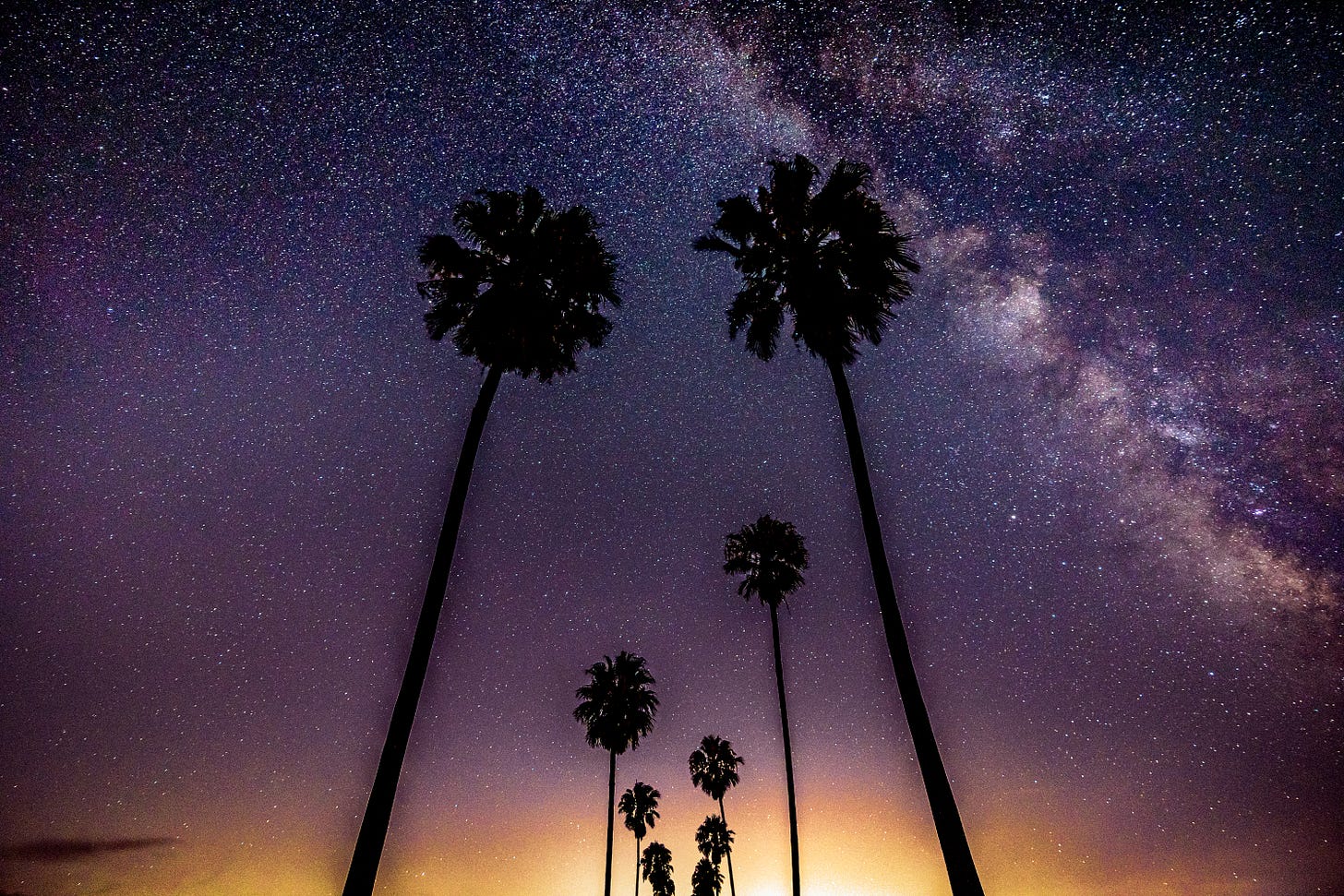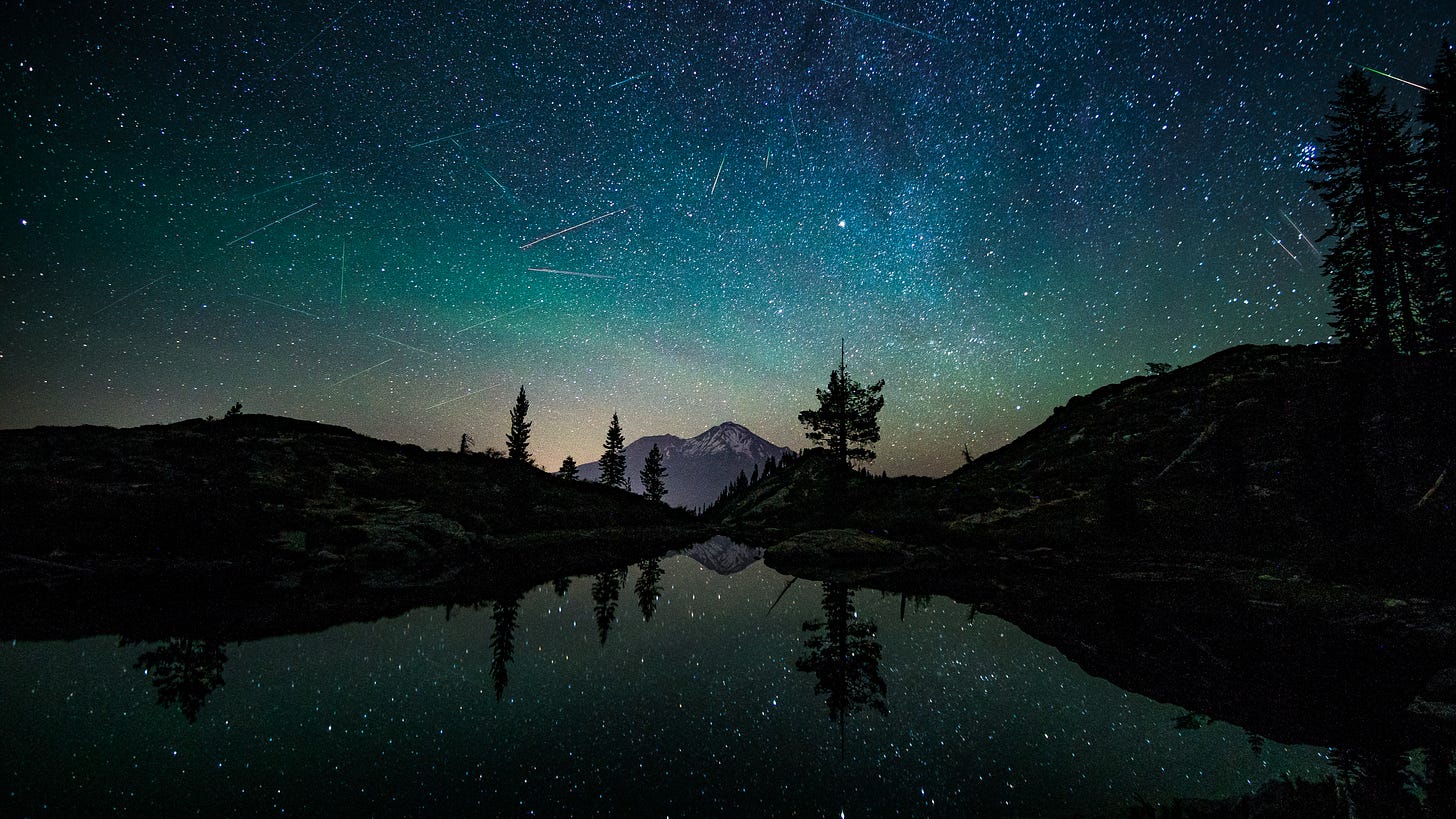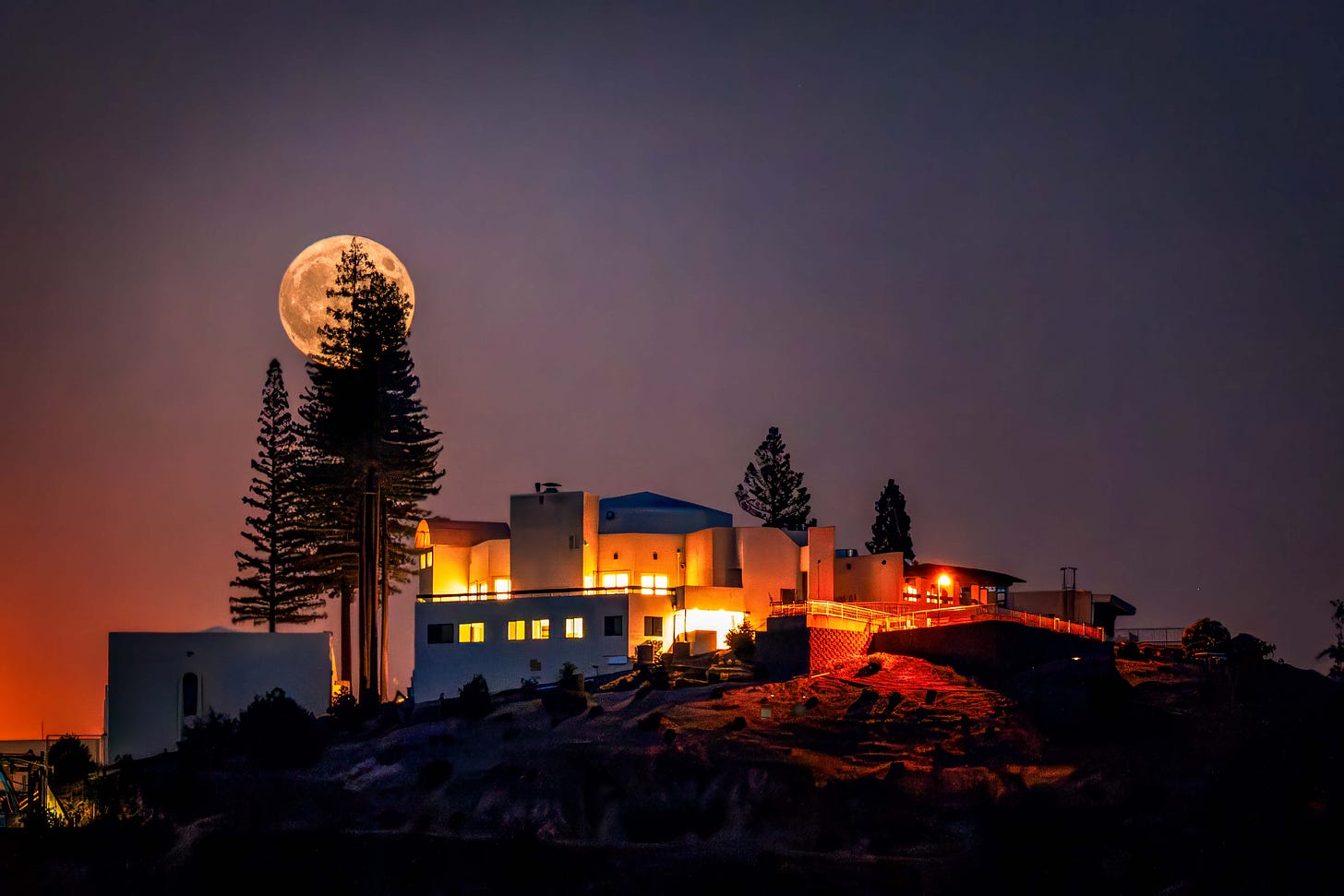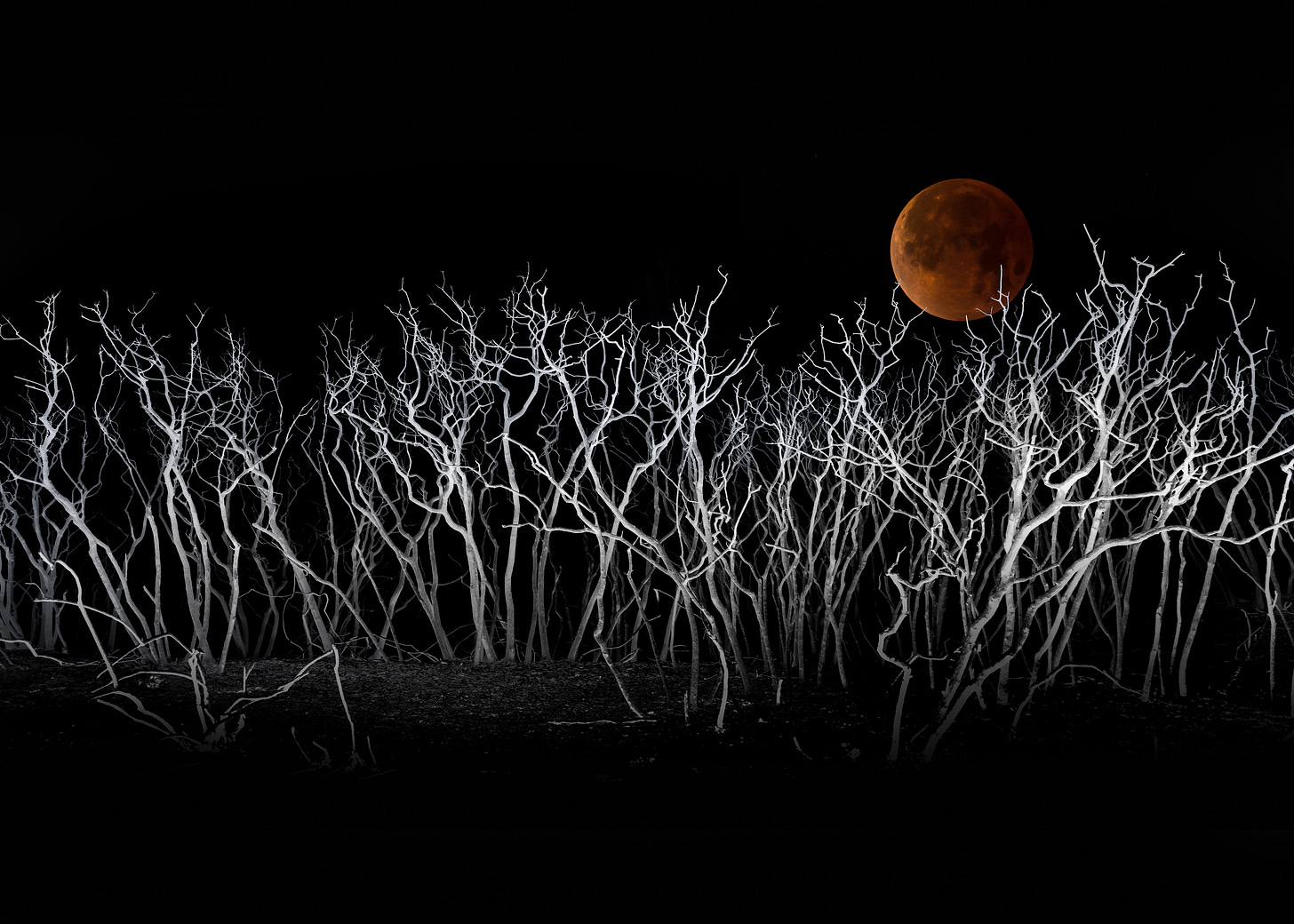NAPA VALLEY, Calif, — Set against the serene backdrop of California's wine country, Napa Valley isn't just a haven for viticulture but also a stage for the grand theater of the cosmos. As 2024 unfolds, the night skies promise a series of remarkable celestial events. This guide is your starting point for a celestial journey.
I’ve highlighted my top night-sky events in 2024 with an asterisk (*).
Now: Quadrantids meteor shower
The year kicks off with the Quadrantids, a prolific meteor shower offering up to 40 meteors per hour at its peak. Originating from the extinct comet 2003 EH1, the shower is best viewed from a dark location after midnight. Despite the waning gibbous moon's light, the shower, peaked on the night of Jan. 3 (5 p.m.) and the morning of Jan. 4 (4 a.m.), promises a worthwhile display throughout the next week.
*Jan. 18: Jupiter and the moon dance together
On Jan. 18 (after sunset PST), the night sky will be graced with the moon and Jupiter appearing close together. This eye-catching conjunction showcases the largest planet in our solar system beside a glowing half-moon. If you miss this spectacle, look out for more pairings on Feb. 14, March 13 and April 10, each offering a unique view as the moon cycles through its phases. With binoculars, you might also spot Jupiter's four largest moons.
Jan. 11: New moon
The new moon on Jan. 11 (3:59 a.m.) provides perfect conditions for stargazing. With the moon invisible against the night sky, it's an ideal time to observe galaxies and star clusters without the moon's glare.
Jan. 12: Mercury at its greatest western elongation
Mercury reaches its greatest western elongation at 23.5 degrees from the sun on Jan. 12 (3:59 a.m.), making it visible above the eastern horizon just before sunrise. When either Mercury or Venus is at its greatest western elongation, they are farthest west of the sun and visible just before sunrise.
Jan. 25: Full Wolf Moon
The full moon on Jan. 25 (9:55 a.m.), traditionally known as the Wolf Moon, illuminates the winter night sky. As it positions opposite Earth from the sun, its fully illuminated face provides a captivating sight.
Feb. 9: New moon
Another new moon graces the sky on Feb. 9 (3 p.m.), offering another night of prime deep-sky viewing without the interference of moonlight.
Feb. 24: Full Snow Moon
The full moon on Feb. 24 (4:32 a.m.) is known as the Snow Moon, heralding the typically heavy snowfall of February. Its luminous presence provides a bright focal point on chilly winter nights.
March 10: New moon
March's new moon on the 10th (2:02 a.m.) once again darkens the skies, creating favorable conditions for stargazing and deep-sky photography.
March 20: March equinox
The March equinox on the 20th (starts at 8:01 p.m., March 19) marks an astronomical turning point when the sun shines directly on the equator, resulting in nearly equal amounts of day and night worldwide. It also heralds the first day of spring in the Northern Hemisphere.
March 24: Mercury at its greatest eastern elongation
Mercury makes another prominent appearance on March 24 (starts at 11:02 p.m., March 23), reaching its greatest eastern elongation. When either Mercury or Venus are at their greatest eastern elongation, they are farthest east of the sun and visible just after sunset, appearing in the evening sky. This time it's visible low in the western sky just after sunset, offering another opportunity to observe this swift planet.
March 25: Full Worm Moon and penumbral lunar eclipse
The full moon in March is known as the Worm Moon, symbolizing the thawing ground and the reappearance of earthworms. Accompanying this full moon is a penumbral lunar eclipse on March 25 (12 a.m.), when the moon passes through Earth's partial shadow, subtly darkening its surface.
*April 8: Total solar eclipse and new moon
April 8 is a day of celestial significance with a new moon (11:22 a.m.) and a rare total solar eclipse. The eclipse will be a partial view from Napa Valley but still promises a breathtaking sight as the moon covers part of the sun. Use proper eye protection to safely enjoy this event.
April 22, 23: Lyrids meteor shower
The Lyrids meteor shower peaks on the night of April 22 (after midnight) and the morning of April 23. While the glare of the full moon may hinder visibility, darker areas of Napa Valley offer a chance to see these meteors streaking from the constellation Lyra.
*April: Comet 12P/Pons-Brooks encounter
In April (after sunset PST), comet 12P/Pons-Brooks, brightening significantly, may be visible in the western sky. On April 12, it nears Jupiter, aiding its visibility. By April 21, it's at peak brightness near the sun. Also, during the April 8 total solar eclipse it may be visible near the eclipsed sun, offering a unique celestial spectacle. Keep an eye out for this impressive comet.
April 23: Full Pink Moon
The full moon in April, known as the Pink Moon, occurs at 3:50 p.m. on April 23 and signifies the sprouting of moss pink, one of the early spring flowers. It's also a time when coastal tribes noted the upstream migration of shad fish.
May 4, 6 and 7: Eta Aquarids meteor shower
The best views of the Eta Aquarids are expected in the predawn hours of May 4, when the waning crescent moon will not rise until just before dawn, meaning particularly dark skies will allow stargazers to glimpse even the faintest shooting stars. However, the peak on the night of May 6 (after midnight) and the morning of May 7 offer up to 60 meteors per hour. While this shower favors the Southern Hemisphere, observers in Napa Valley can still catch a good show.
May 8: New moon
May's new moon on the 8th (8:23 p.m., May 7) provides another perfect opportunity for observers to explore the fainter objects in the night sky without the interference of moonlight.
May 9: Mercury at its greatest western elongation
Mercury appears again in the morning sky on May 9 (starts 4:04 p.m., May 8) at its greatest western elongation. Early risers can catch a glimpse of it low in the eastern sky just before sunrise.
May 23: Full Flower Moon
The full moon on May 23 (6:55 a.m.) is known as the Flower Moon, celebrating the abundance of blooming flowers across the landscape. It's also referred to as the Corn Planting Moon and the Milk Moon.
June 6: New moon
June's new moon on the 6th (5:39 a.m.) continues the cycle of dark skies, presenting another ideal night for stargazing and deep-sky observing.
June 20: June solstice
The June solstice on the 20th (1:46 p.m.) marks the longest day and shortest night in the Northern Hemisphere. It's a time of heightened solar energy and extended twilight, offering unique lighting for evening sky observations.
June 22: Full Strawberry Moon
June's full moon on the 22nd (6:09 p.m., June 21), the Strawberry Moon, coincides with the peak of the strawberry harvesting season. This moon is also known as the Rose Moon and the Honey Moon, reflecting the romantic and fruitful aspects of early summer.
*July through early September: Prime viewing of the Milky Way Core
In Napa Valley, the best time to observe and photograph the Milky Way's core stretches from July through early September. This period offers an exceptional celestial display when the core is prominently visible low on the southwest horizon, especially after sunset and before sunrise. The most favorable conditions for viewing this galactic wonder occur during the new moon phase or when the moon sets early, providing the darkest skies. Seek out locations away from city lights to fully appreciate the clarity and beauty of the Milky Way during these peak months.
July 5: New moon
The new moon on July 5 (3:59 p.m.) offers yet another night of dark skies, perfect for observing the deep celestial wonders above Napa Valley.
July 21: Full Buck Moon
The full moon on July 21 (3:18 a.m.) is known as the Buck Moon, marking the time when male deer (bucks) begin to grow their new antlers. It's also referred to as the Thunder Moon and the Hay Moon due to the season's typical thunderstorms and agricultural activities.
July 22: Mercury at its greatest eastern elongation
On July 22 (3:09 p.m.), Mercury reaches its greatest eastern elongation, becoming visible low in the western sky just after sunset. It's an excellent opportunity to view this elusive planet as it lingers in the twilight.
July 28, 29: Delta Aquarids meteor shower
The Delta Aquarids meteor shower peaks on the night of July 28 (after midnight) and the morning of July 29. While the second-quarter moon may obscure some meteors, a dark observation spot could still offer a good view of this average but enjoyable shower.
Aug. 4: New moon
August's new moon on the 4th (4:15 a.m.) darkens the skies once again, providing optimal conditions for observing faint galaxies and star clusters.
*Aug. 12, 13: Perseids meteor shower
The Perseids, one of the most popular meteor showers and my favorite to photograph, peaks on the night of Aug. 11 (after midnight) and the morning of Aug.12. With up to 60 meteors per hour and a first-quarter moon setting shortly after midnight, the pre-dawn hours promise an excellent show for those in dark locations.
Aug. 19: Full Sturgeon Moon
The full moon on Aug.19 (11:27 a.m.) is known as the Sturgeon Moon, signifying the time when this large fish is typically caught. It's also known as the Green Corn Moon and the Grain Moon.
*September and October: Comet C/2023 A3 (Tsuchinshan-ATLAS) display
In late 2024, particularly September and October (after sunset PST), Comet C/2023 A3 (Tsuchinshan-ATLAS) is expected to become a spectacular sight. Initially visible with telescopes by early summer, it will approach the sun and Earth, potentially becoming visible to the naked eye or through binoculars, especially low in the eastern sky before sunrise. By Oct. 12, it should rise higher in the evening sky, becoming more visible in the Northern Hemisphere. While predicting a comet's behavior is difficult, Tsuchinshan-ATLAS shows promise of being an impressive spectacle in the night sky.
Sept. 3: New moon
September's new moon on the 3rd (6:57 p.m., Sept. 2) continues the cycle of dark, moonless nights, offering another opportunity for deep-sky observations.
Sept. 5: Mercury at its greatest western elongation
On Sept. 5 (5:01 p.m., Sept. 4), Mercury reaches another greatest western elongation, this time visible low in the eastern sky just before sunrise. It's an ideal time to spot this swift-moving planet.
Sept. 8: Saturn at opposition
Saturn reaches opposition on Sept. 8 (all night), meaning it's closest to Earth and fully illuminated by the sun. It will be brighter than at any other time of the year and visible all night long. Viewing Saturn and its moons through a medium-sized telescope is particularly rewarding during opposition.
*Sept. 17: Saturn and moon conjunction
On Sept. 17 (after sunset), observe an exquisite celestial pairing as Saturn and the moon appear close in the southeastern sky. This striking alignment, visible to the naked eye, will recur on Oct. 14 and 15, Nov. 11, and Dec. 8. As they become visible soon after sunset, the bright moon and Saturn's distinct yellow hue can be observed together through binoculars, offering a stunning contrast in the night sky.
Sept. 18: Full Corn Moon and partial lunar eclipse
The full moon on Sept. 18 (starts 7:36 p.m., Sept. 17), traditionally known as the Corn Moon, coincides with a partial lunar eclipse. As the moon passes through Earth's shadow, part of it will darken, creating a striking contrast in its appearance. This event is visible throughout much of North America, Mexico, Central America and South America.
Sept. 20: Neptune at opposition
Neptune reaches opposition on Sept. 20 (all night), becoming brighter and more visible than at any other time of the year. While it will appear as a tiny blue dot in all but the most powerful telescopes, it's still an exciting opportunity to observe this distant planet.
Sept. 22: September equinox
The September equinox on the 22nd (5:39 a.m.) marks the start of fall in the Northern Hemisphere and spring in the Southern Hemisphere. It's a time when the sun shines directly on the equator, resulting in nearly equal amounts of day and night worldwide.
*Oct. 2: New moon and Ring of Fire solar eclipse
Oct. 2 is a day of dual significance with a new moon (11:51 a.m.) and an annular solar eclipse. During the eclipse, the moon will be too far from Earth to completely cover the sun, resulting in a ring of light around the darkened moon. This event, known as the "ring of fire," will be partially visible from Napa Valley.
Oct. 7: Draconids meteor shower
The Draconids meteor shower peaks on the night of Oct. 7 (after sunset). This minor meteor shower, produced by debris left behind by comet 21P Giacobini-Zinner, offers about 10 meteors per hour. The best viewing is in the early evening from a dark location, with meteors radiating from the constellation Draco.
Oct. 17: Full Hunter's Moon and supermoon
The full moon on Oct. 17 (4:28 a.m.) is known as the Hunter's Moon and is also one of three supermoons in 2024. It will be near its closest approach to Earth, appearing slightly larger and brighter than usual. This moon is traditionally associated with the time of year when game is fattened and ready to hunt.
Oct. 21, 22: Orionids meteor shower
The Orionids meteor shower peaks on the night of Oct. 21 (after midnight) and the morning of Oct. 22. While the waning gibbous moon may obscure fainter meteors, a dark location after midnight could still offer a view of this shower, which is produced by dust grains left behind by Comet Halley.
Nov. 1: New moon
November's new moon on the 1st (5:49 a.m.) provides another night of dark skies, ideal for observing the fainter objects in the celestial sphere.
Nov. 4, 5: Taurids meteor shower
The Taurids meteor shower peaks on the night of Nov. 4 (after midnight). This long-running minor shower, consisting of two separate streams, produces about five to 10 meteors per hour. The first-quarter moon will block out all but the brightest meteors, but a dark location after midnight offers the best chance to catch these slow-moving meteors radiating from the constellation Taurus.
Nov. 15: Full Beaver Moon and supermoon
The full moon on Nov. 15 (1:30 p.m.) is known as the Beaver Moon and is the last of three supermoons in 2024. Traditionally this moon signified the time to set beaver traps before the swamps and rivers froze over. As it is near its closest approach to Earth, it will appear slightly larger and brighter in the sky.
Nov. 16: Mercury at its greatest eastern elongation
On Nov. 16 (2:50 p.m.), Mercury reaches its greatest eastern elongation, becoming visible low in the western sky just after sunset. It's another excellent opportunity to view this planet as it reaches its highest point above the horizon.
Nov. 17: Uranus at opposition and Leonids meteor shower
A double event occurs on Nov. 17 with Uranus at opposition (all night) and the peak of the Leonids meteor shower (after midnight). Uranus will be at its closest approach to Earth and fully illuminated by the sun, making it the best time to view this distant planet. The Leonids, known for their cyclonic peaks every 33 years, will offer up to 15 meteors per hour. The nearly full moon will obstruct the fainter meteors, but a dark location after midnight offers a chance to see these fast and bright meteors radiating from the constellation Leo.
Dec. 1: New moon
The new moon on Dec. 1 (starts 2:22 p.m., Nov. 30) creates another night of dark skies, perfect for deep-sky observing and capturing the fainter celestial wonders. It's an ideal time for astronomers and photographers alike to explore the beauty beyond our atmosphere without the interference of moonlight.
*Dec. 4: Venus and crescent moon pairing
On Dec. 4 (after sunset), Venus and a crescent moon will create a stunning tableau in the southwestern sky. As the two brightest objects in the night sky after the sun, this close encounter is a delightful sight, easily viewed together through binoculars. Venus will also present a quarter-moonlike appearance when observed through a telescope. Look just after sunset to catch this beautiful celestial alignment.
Dec. 7: Jupiter at opposition
Jupiter reaches opposition on Dec. 7 (all day), becoming brighter and more visible than at any other time of the year. This is the best time to view and photograph Jupiter and its moons, which will be fully illuminated by the sun. A medium-sized telescope can reveal some of the details in Jupiter's cloud bands, while a good pair of binoculars should allow you to see its four largest moons, presenting a breathtaking sight in the night sky.
Dec. 13, 14: Geminids meteor shower
The Geminids meteor shower, considered by many to be the best in the heavens, peaks on the night of Dec. 13 (after sunset) and the morning of Dec. 14 (before sunrise). Producing up to 120 multicolored meteors per hour, this shower is a highlight of the celestial calendar. The nearly full moon will obscure the faintest meteors, but the brightest will still be visible. Observers are advised to find a dark location after midnight and look toward the constellation Gemini, though meteors can appear anywhere in the sky.
Dec. 15: Full Cold Moon
The full moon on Dec 15 (1:03 a.m.) is known by early Native American tribes as the Cold Moon because it coincides with the onset of the winter chill. Also referred to as the Long Night Moon and the Moon Before Yule, it illuminates the longest nights of the year, casting a serene glow over the winter landscape.
Dec. 21: December solstice
The December solstice on Dec. 21 (1:17 a.m.) marks the official beginning of winter in the Northern Hemisphere and summer in the Southern Hemisphere. It's the day when the South Pole is tilted closest to the sun, resulting in the shortest day and longest night of the year in the north.
Dec. 21, 22: Ursids meteor shower
The Ursids meteor shower, a modest but reliable display, peaks on the night of Dec. 21 (after sunset) and the morning of Dec. 22 (before sunrise). Produced by dust grains left behind by Comet Tuttle, the Ursids produce about five to 10 meteors per hour. The waning gibbous moon will obscure some of the fainter meteors, but a dark location after midnight offers a chance to catch the brighter ones radiating from the constellation Ursa Minor.
Dec. 25: Mercury at its greatest western elongation
Mercury reaches its greatest western elongation of 22 degrees from the sun on Dec. 25 (2 p.m.), offering a splendid view in the early morning sky. Look for the planet low in the eastern sky just before sunrise to catch a glimpse of this elusive celestial body.
Dec. 30: New moon
The new moon on Dec. 30 (2:28 p.m.) offers one final night of dark skies for 2024, perfect for observing faint galaxies and star clusters. It's a fitting end to a year filled with celestial wonders, providing one last chance to gaze deep into the cosmos without the moon's light.
Throughout 2024, Napa Valley's night sky will be a canvas for multiple night-sky events, including new moons providing the darkest skies for deep-sky observing and planetary oppositions offering excellent viewing opportunities through telescopes or telephoto lenses. For those interested in astronomical photography, events like the conjunctions and meteor showers offer excellent subjects. Meanwhile, lunar phases continually remind us of the dynamic nature of our celestial surroundings.
As you get ready for a yearlong celestial journey, it's essential to consult astronomical charts for precise timings and positions, such as using Photo Pills or The Photographer’s Ephemeris. Apps like my favorite, Sky Guide, help you prepare your viewing equipment — whether that's a telescope or a telephoto camera (I often use my Sony 16-35mm, f2.8 lens). It's also crucial to scout for the best observation locations during the day to ensure captivating foregrounds and then again at night to avoid any bright lights in your field of view. This careful planning will significantly enhance your stargazing experience. Napa Valley, with its natural beauty and relatively dark, clear skies, offers more than a beautiful backdrop for these events; it provides an ideal setting for connecting with the cosmos.
Tim Carl is a Napa Valley-based photojournalist.












Bookmarking this for future reference and adding some of these dates to my calendar so we don’t miss anything! We often stand under the night sky in awe, but also in some state of confusion “what planet is that?” This helps. Beautiful photos, too. Inspiring!
Photos scan back-and-forth up and down. I’m telling you just beautiful.